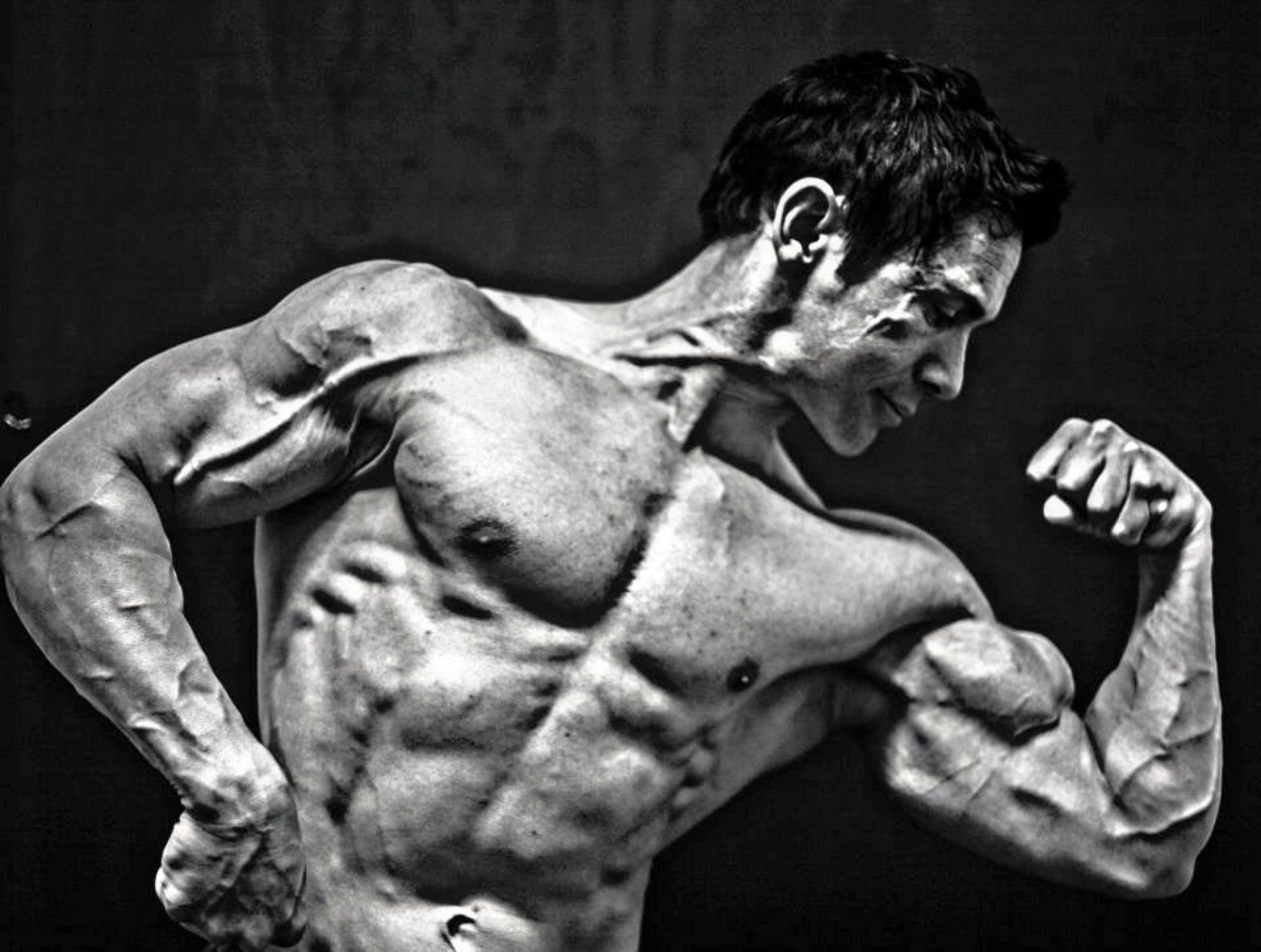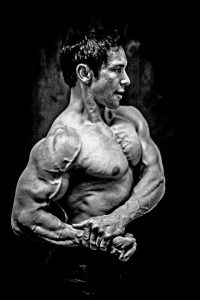Over the last 20 years I have tried a lot of different ideas to develop my back, however after a lot of experimentation to see what works for me I have found that I always seem to get the most bang for my buck from the exercises below albeit with some form of modification.
Dead-lifts are one of my favourite back exercises and it definitely suits my structure. I have relatively long arms and short legs which allows me to use a reasonable amount of weight with good form (ribcage high, arch in back, abs tensed throughout). I also always feel it strongly in my lats (you can emphasise this more by flaring out the lats on the initial pull) and upper back muscles. Some people suggest that bodybuilders should not do Dead-lifts because they can thicken the waist; I totally disagree with this rationale as my waist measurement for competitions has not grown over the years (my back has though).
Deadlifting (with good technique) has so many benefits; here are just a few of them:
- It is one of the best exercises to increase strength and muscle mass.
- It works your whole body hard!
- Research has shown that exercises that use the whole body like the deadlift can increase the amount of testosterone and growth hormone released within the body.
- It increases your grip strength.
- It can improve your posture and make it easier to perform everyday tasks like picking up something off the ground.
Some people may not be ideally suited to this exercise but there are modifications that can be made so you can get the benefits. You can use a hex bar (where you are inside the frame of the bar)-this allows you to use your legs more and take some of the stress off the lower back. I have found it a great way for my students at school to learn proper technique for both regular dead-lifts and squats. Some research suggests that this exercise may even be more effective at increasing power than regular Dead-lifts for some people. Also to overcome any leverage issues you could do partial deadlifts in a power cage.
Chin ups have always been a mainstay in my back workouts since I began training. I alternate grips: supinated, pronated and semi-pronated as well as using a variety of grip widths. I continue to lift as heavy as I can right up to contests to keep as much muscle as possible. So if you are on the light side adding weight using a vest/ belt is a necessity to maintain or improve muscle mass. Another version of the chin up I have found really effective is the Vince Gironda Sternum Chin up; usually you start with an underhand grip, around shoulder width apart (I use a D-handle hung over Smith machine bar). As you pull yourself up lean back, look up at the ceiling and arch your back throughout the movement with the aim of touching the bar with your sternum. Below is a brief explanation of the exercise taken from ironguru.com which is a site dedicated to the training ideas of Vince Gironda.
- The beginning of the movement is more like a classical chin.
- The midrange resembles a pullover motion.
- The end position duplicates the finishing motion of a rowing movement.
With Chin ups I have found that when I focus more on the negative aspect of each repetition (where you have a longer eccentric movement like 4-6 seconds with a 1-2 second concentric movement) you can get an awesome pump and a better mind muscle connection so I alternate this technique with a more traditional rep cadence. If you find Chin ups too difficult you can use a spotter, weight assisted machines and equipment until you can lift your own body weight. Although I prefer the different variations of the Chin up, Lat Pull-downs can be an effective exercise for hitting the lats too; especially when you can’t lift your own body weight.
I perform a variation of a row every back workout with DB rows and BB rows being my preferred choices. I perform both standard and reverse BB rows for variety and to emphasise different muscle fibres. Dorian Yates was a huge fan of the reverse version and you can’t argue with his back development! If you have access to a hex bar then you can do BB hex rows with a semi-pronated or palms facing the body grip which will give you a different feel and allow some people to use more weight than normal. Cable rows or Machine Rows are effective too and allow an array of different hand grips and movement pathways to hit different parts of your back.
I utilise a pronated, semi-pronated and supinated grip when performing DB rows and pull towards my hip. I also like to imagine my hand is a hook and I concentrate on pulling with my lats not my arms.
I am a big fan of Steve Holman’s and Jonathan Lawson’s P.O.F (positions of flexion) where they hit each muscle with a mid-range(compound) exercise, contracted exercise(usually an isolation movement) and stretch position exercise. DB pullovers are awesome for the stretch position and can also provide a great workout for the long head of the triceps too. You can emphasise the lats better by flaring your elbows out more and maintaining the same angle at the elbow throughout the movement. Straight arm pull-downs with a shoulder width hand grip are a great contracted exercise and isolates the lats with minimal arm involvement.
If you struggle to feel your back muscles during your normal workouts you can use pre-exhaustion which can be used to fatigue the back muscles first with an isolation movement before hitting it with a compound movement. This has been used successfully by many bodybuilders (Dorian Yates included too!) to hammer the back and kick start growth.
The back is a complex area that requires a range of exercises to hit the many different aspects of it. Some exercises (or versions of it) will be better than others for you- so if an exercise is not giving you the results you want- change hand positions, range of motion, the path in which your body or limbs travel, angle of your torso, rep speed and exercise order to find what works best for you!


